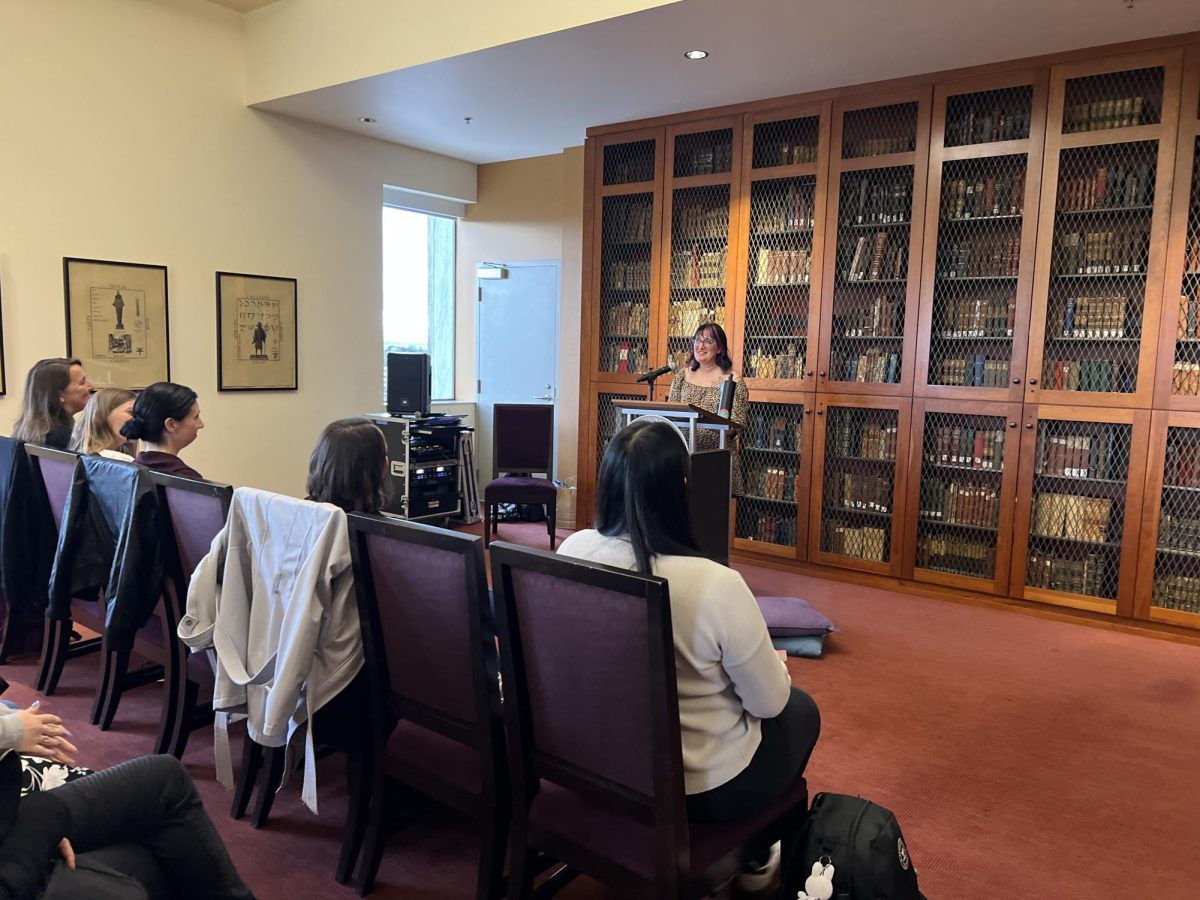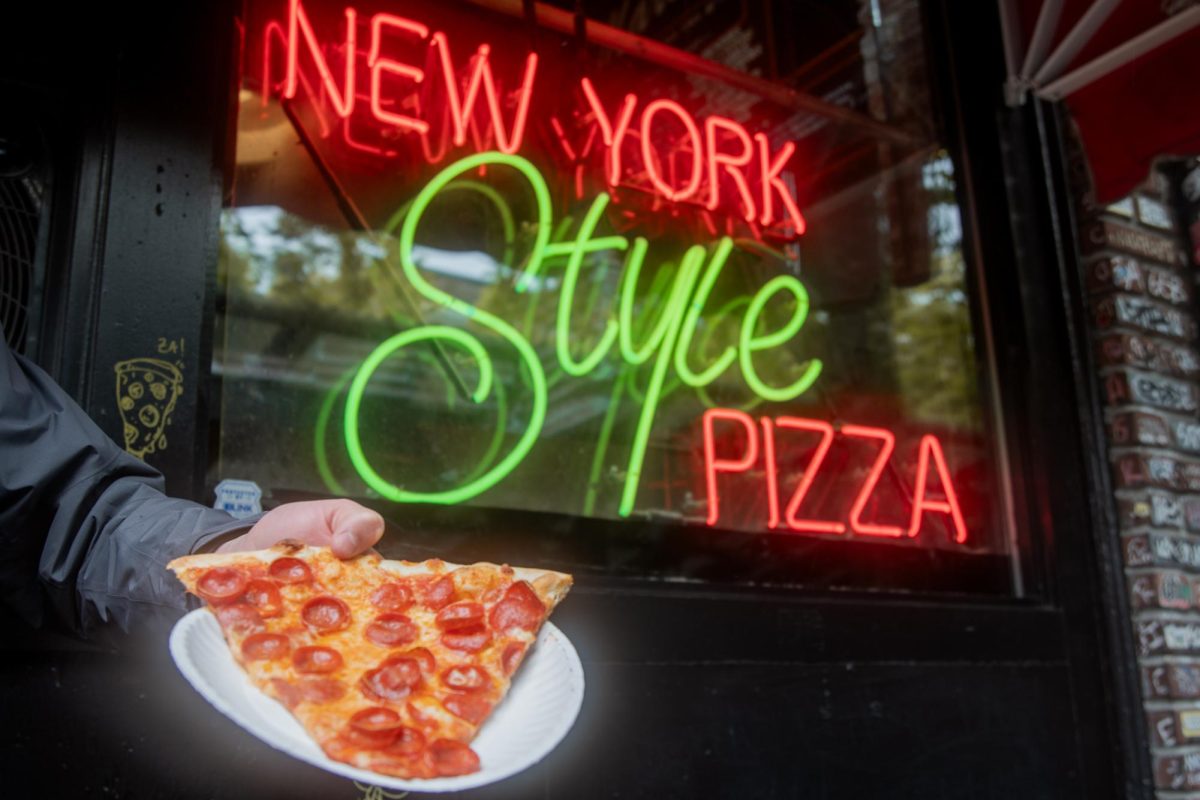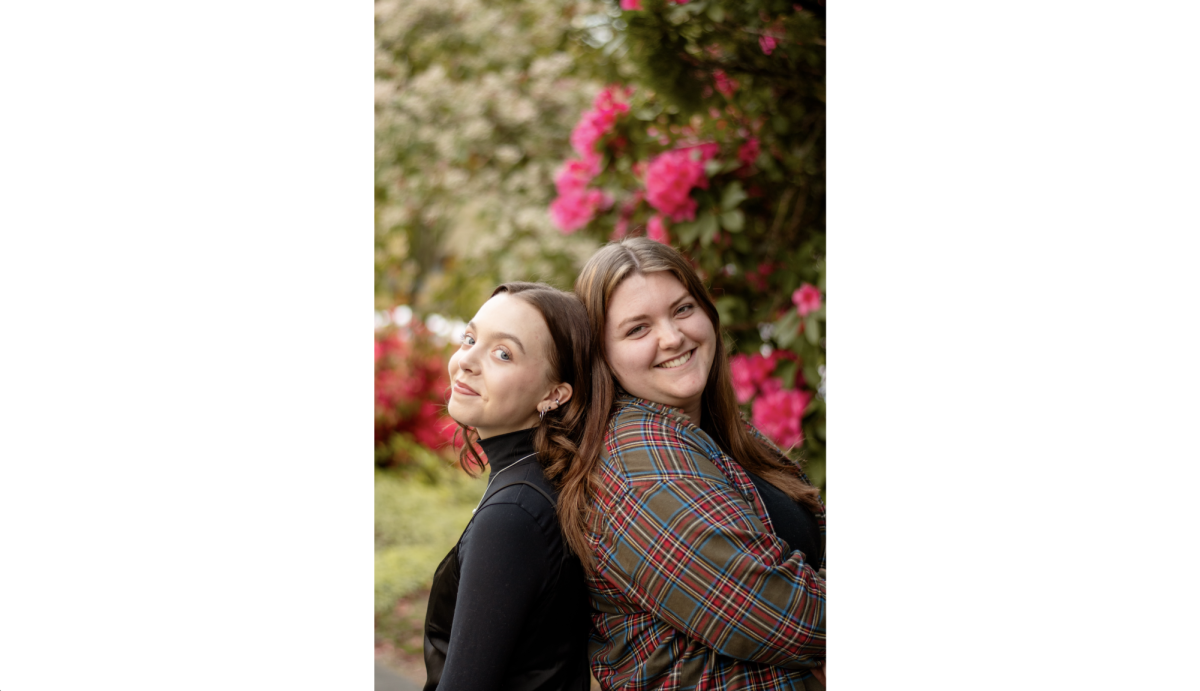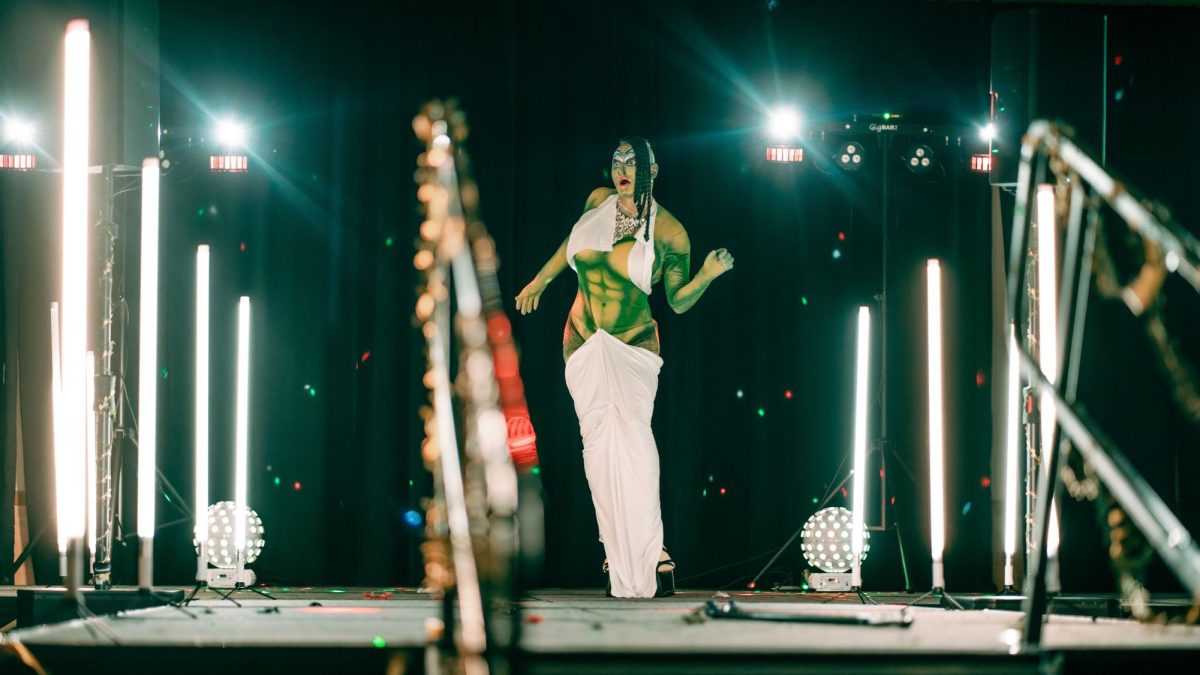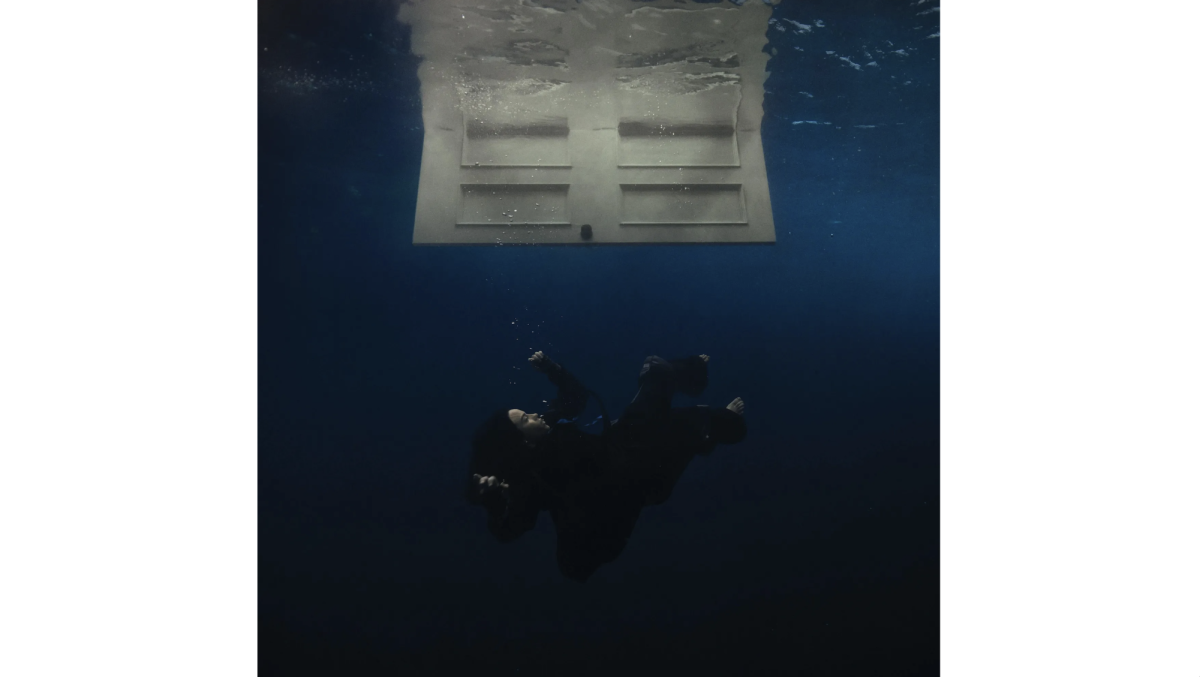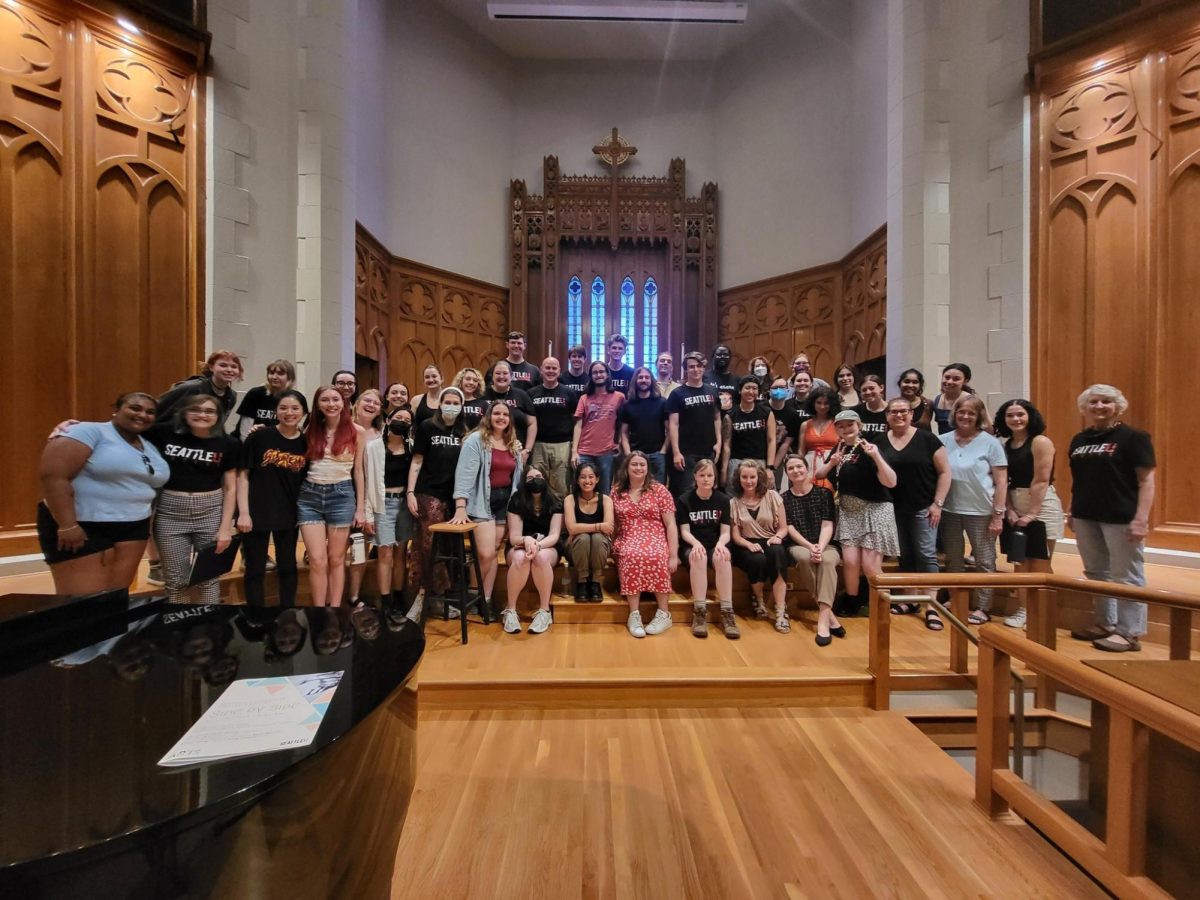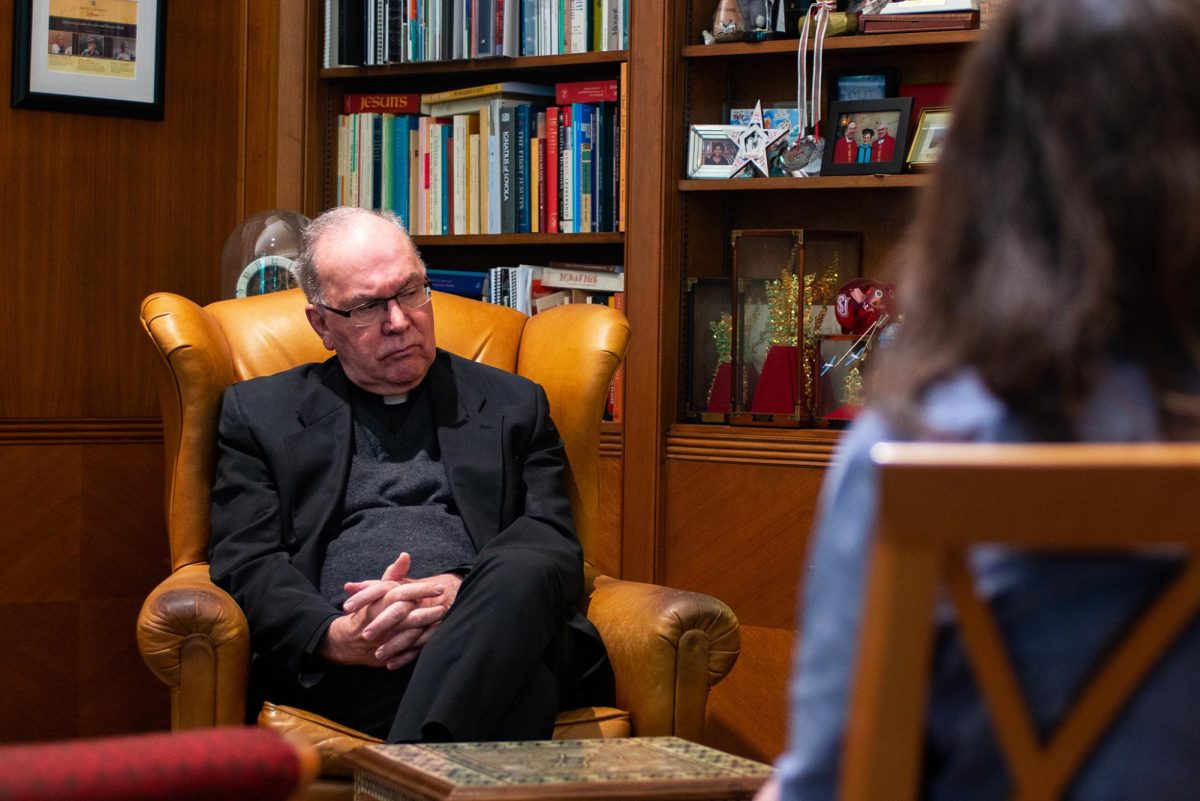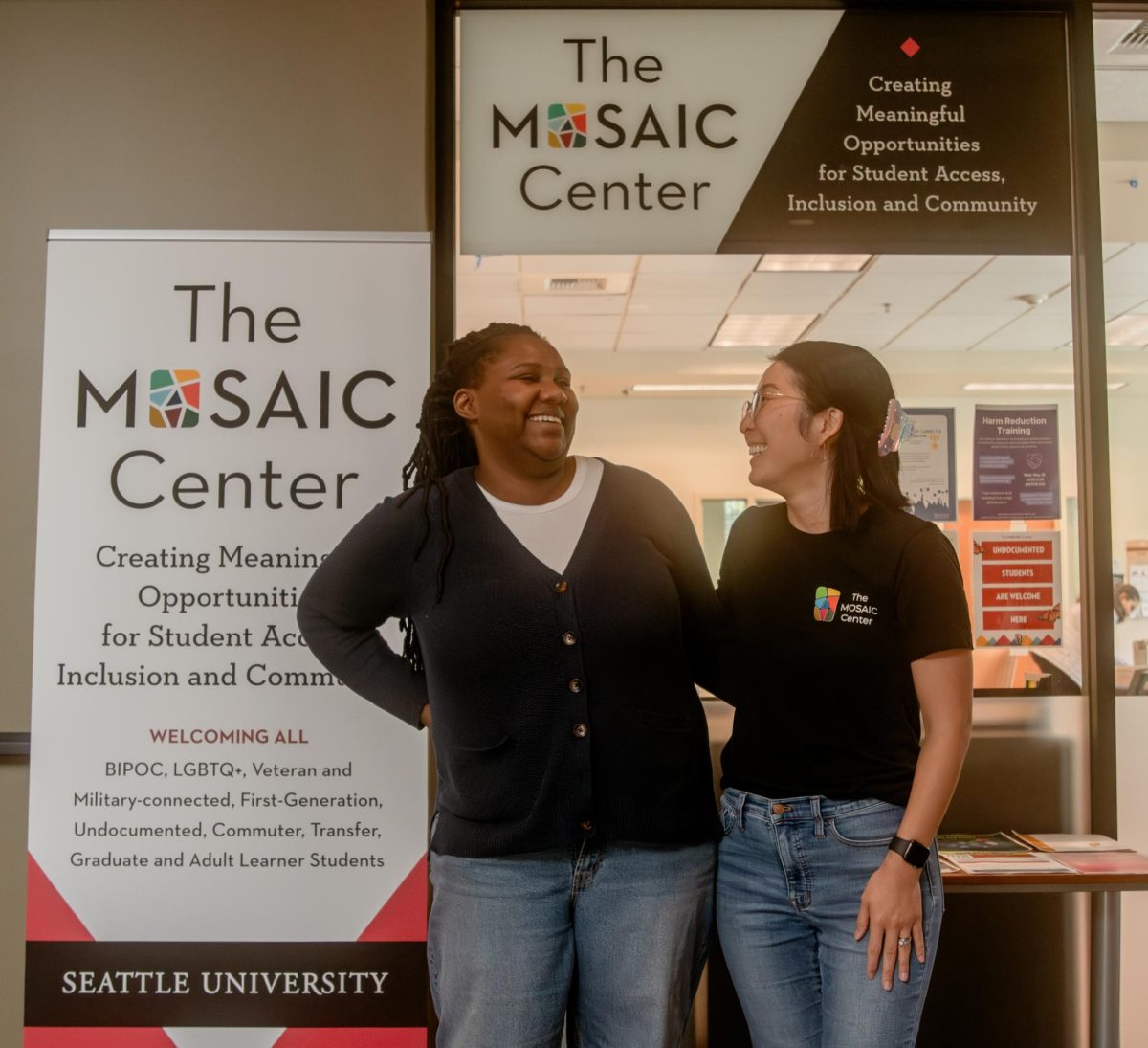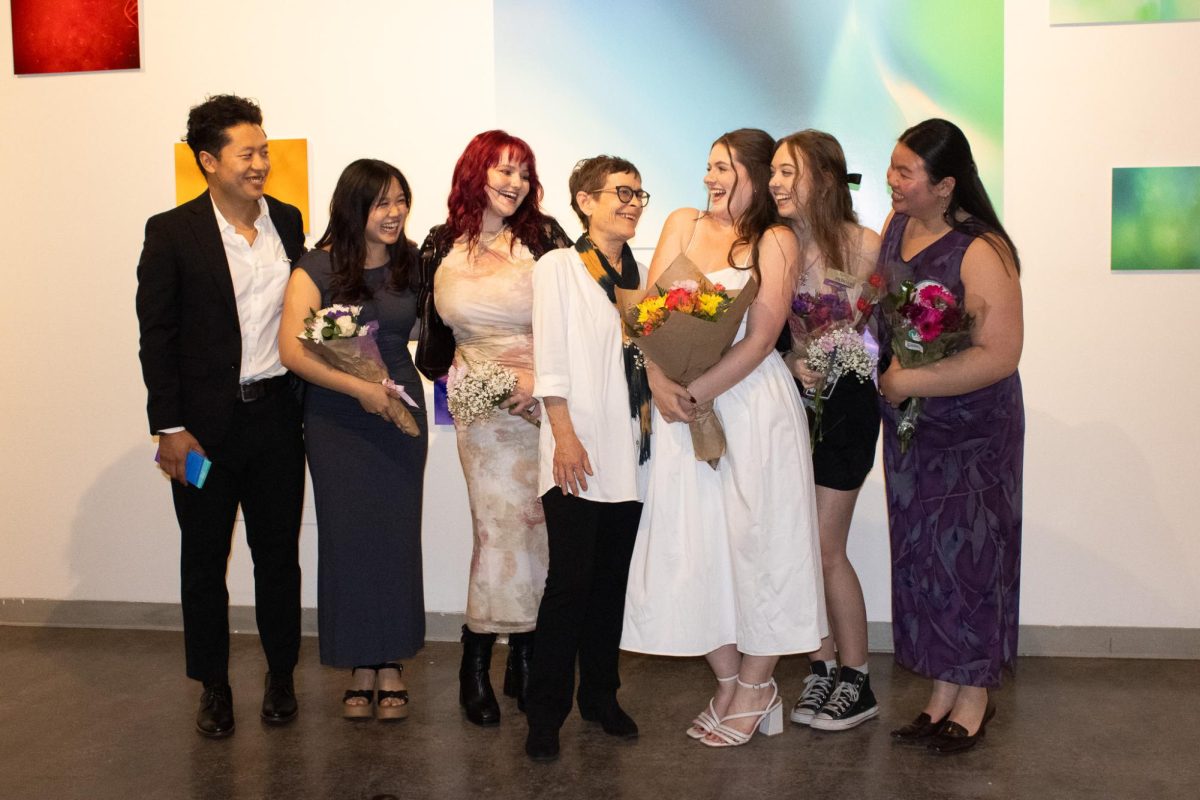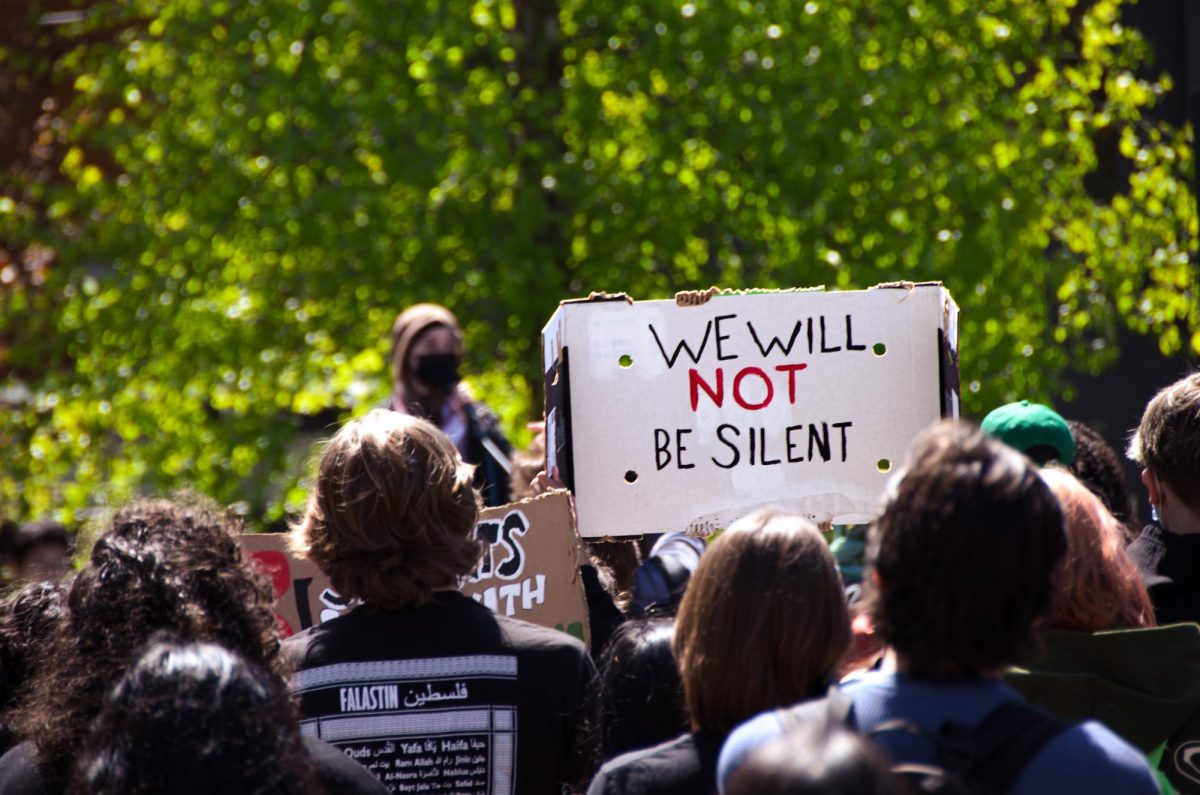The exhibition was quiet, a soft resurrection of secret ballads and storytelling. Its tranquility harvested itself in the art there. In its conversations, its lounge, there was static. The atmosphere had been charged in its stillness, the participants waiting for sound.
“Healing Through Art,” the four and a half hour-long showcase on the sixth floor of the Lemieux Library, housed a myriad of tales centered around reclamation.
“The overall aim and goal of the event is to create and hold [a] physical space for folks to be in community, and be in support, as we focus on healing, as we focus on taking a moment to support and recognize survivors,” Associate Director of Wellness and Health Promotion Mikaela Wallin said.
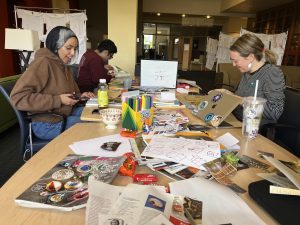
Hour one began with the survivor art gallery viewing, where Seattle University students created and submitted artwork to be displayed. It included the Clothesline Project from prior years, mixed media artwork and other lofty submissions that occupied the perimeter of the space. In the room’s center, Student Engagement Librarian Shelley Carr hosted the Tell Your Story Zine-Making Workshop.
“There’s this amazing legacy of zines. It’s a beautiful safe space for anyone to take refuge in. And because they’re made out of printer paper, xeroxed, copied, and distributed, you can really get your message out into your community,” Carr said.
The fascination with zines intensified during the mid-1970s, and continued its growth into the 80s. Zines gifted a platform for voices labeled ‘other,’ and while they were excluded from mainstream media, marginalized peoples tooled the cheap printed medium as a means to freely swarm their perspectives on politics, on art, on personal experiences into the world. They’re inexpensive to produce and celebrate a ruleless self-expression which had provoked its attractiveness.
“I’m calling [my book] a Zine-style memoir,” Senior Director for Operations in the Center for Community Engagement Stephanie Lewis said.
She writes under her maiden name, Stephanie Kuehnert, and was invited to read from her memoir, “Pieces of a Girl,” in hour three. The book is bathed in hot pink, and in it, crude pages of her diary entries, cartoons, photographs, used coloring book sheets, diagrams and much more. Breaking the rules of literary fiction standards, the assortment of mixed-media featured was influenced by the time in her life when she was writing for Rookie Magazine.
“It was an online magazine that reminded me so much of my days making zines. There’s this piece from my diary from when I was seven years old [that I’d included in my memoir. It read] how I’d always wanted to be a writer and how I would tell the story of my life, but writing for Rookie is what gave me the structure I needed to make the book,” Lewis said.
Her book shares her young experiences with abuse and addiction in a raw and authentic portrayal of her teenage years. The novelist, Lewis, embodies how the power of storytelling and community navigated her path to survive.
The exhibition goers arrived hungry and watching. Lewis begins the preface of her story.
“One piece of me is that I’m a survivor. That piece was something that really shifted my whole life. But healing, finding community and finding an outlet through creativity has been key to my own journey. It matters so much to me to support other survivors, especially younger people and our students. It’s what [had] prompted me to write this book,” Lewis said.
Hour four of the exhibition invited its listeners to voice their own stories during Open Mic Poetry. The room had lulled, and quieted again. The few participants who’d stood behind the podium recited their work in surety, with a room of ready listeners. Monday’s exhibition acts as the first part to a larger series in recognizing Sexual Assault Awareness Month. With collaborations between offices and departments on campus, the Lemieux Library and McGoldrick Learning Commons have been key partners in the event’s happening.
“We want[ed] to create a space and community healing through creative expression,” Wallin said. “We want[ed] to highlight stories of survivorship with a focus on the ways in which the arts can become central to healing.”






